The Great Garage Find: What To Look For When Buying Rugs From Individuals
Many customers bring in rugs for cleaning and repair assessments after they’ve purchased a rug from an individual. They say that discovering something unusual can be a fun part of their decorating story, and bargain pricing makes it worth the risk. If you’re going to do some thrifting at estate and yard sales, here are a few things to watch out for:
Obvious Edge Fraying
The extreme outside edge and ends are what hold the entire rug together, so any obvious fraying will require some attention to keep the rug from continuing to get worse.
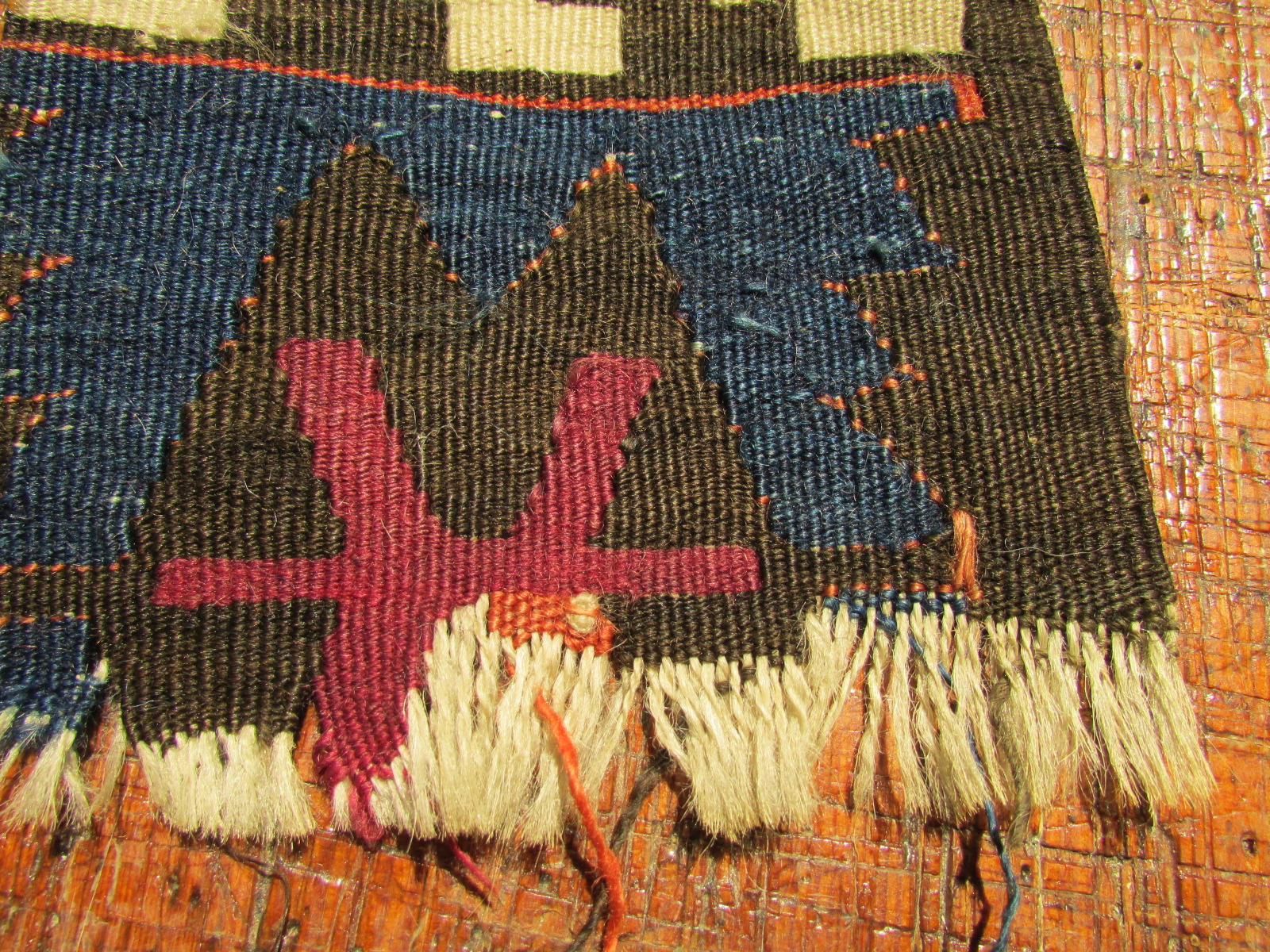
Insect Damage
Look for flat areas or abrupt holes in the nap that might indicate insect damage. If it won’t be hidden under furniture in your house, you may have to count on paying for some repair.

Painted Areas
Sometimes when a rug is worn or moth eaten through the nap, the exposed foundation can look like a blank canvas. Some sellers will redraw the pattern of the rug on the exposed foundation fibers with marker ink or dye. Often this color will bleed out when wet, can dry-transfer to other items, and leave blotchy color behind when cleaned. Complete removal of the ink or dye is not always possible, so reweaving those areas may be needed to hide blurred ink that can’t be completely removed.

Dye Movement
Look for areas where the pattern has blurred into other colors. This may indicate pet urine or other damage to the dye. Rub any deep, or dark, or red colors with both a dry and wet cloth. This isn’t a perfect test, but any color transfer to the cloth indicates poorly set dyes and the possibility that the rug will bleed even more when cleaned.
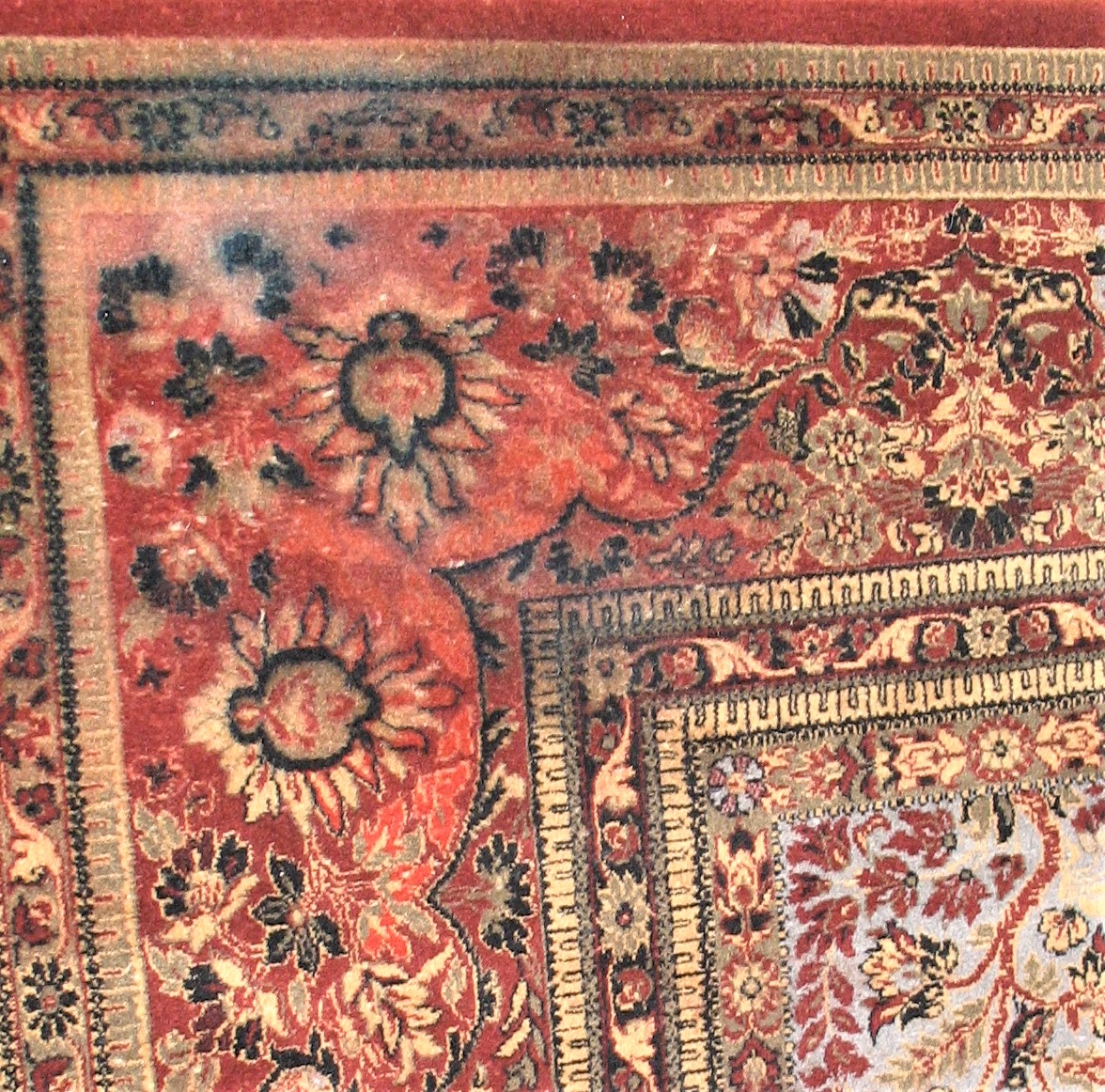
Powder Coming From The Back Of A Rug
This shows that the latex adhesives holding the rug together are breaking down. This can be fixed, although the cost of cleaning and repair may come close to the cost of buying a new rug of that type. Buy only if you really love the look and the price is right.
Weak Fringe
If the fringe is intact but breaks easily when you gently tug on it, that fringe will soon need some work.Fringe can be removed, replaced, or turned under, and if areas of fringe are worn into the body of the rug it will need at least minor repair to keep it from further deterioration.
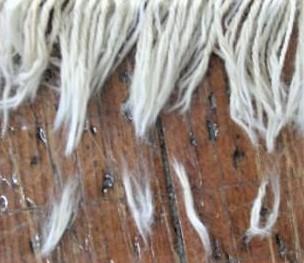
Crackling Sounds When The Rug Is Bent Or Rolled
This indicates dry rot of the rug’s foundation fibers. The rug may look great, but it will be fragile in spots or all over. There is no way to make those fibers strong again, but the rug can be treated to stop further damage, and backing can be applied to stabilize the weak area.
Mildew Odor
This indicates the fungus that causes dry rot is present and has been active. If the rug doesn’t crackle when bent there may be time to save the rug with a proper anti-fungal treatment and cleaning.
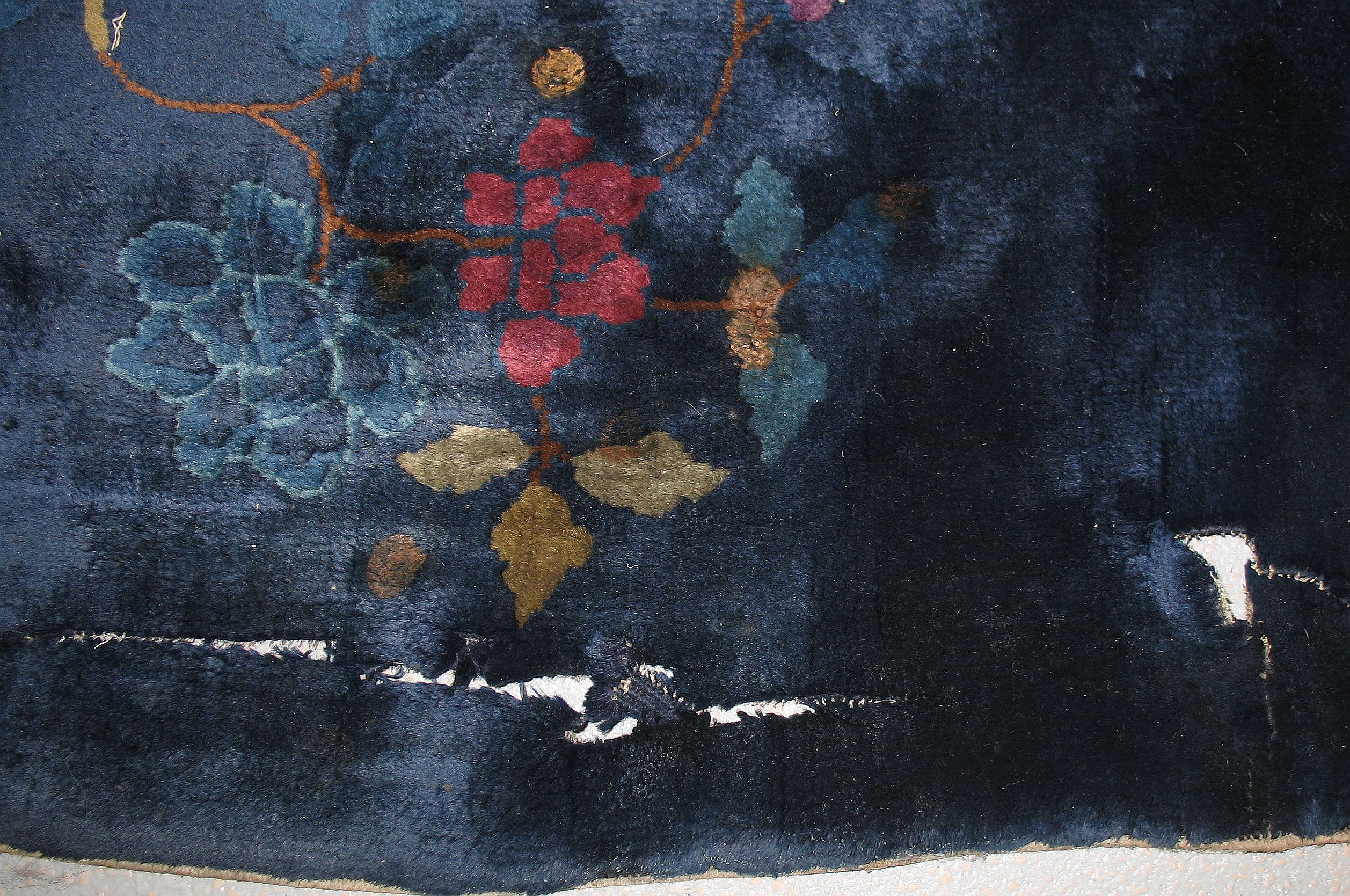
Odors
Some odors can’t be completely removed due to the cause of the odor or the construction of the rug. Smoke, skunk, tear gas and other chemical odors may always be detectable by someone with a sensitive nose. D. A. Burns can remove urine odor from hand-knotted and machine woven rugs that use no latex adhesives in their construction.
Stains
Any discoloration may be permanent damage, so even a pro may not be able to remove them. Only buy if the look of the rug still works if the stains remain.
Tip: Red fades faster than other colors, so a red stain may fade away if the rug can be placed in full sunlight for an extended period of time.
Poorly Sewn Patches
Heavily distressed rugs can be torn in the aging process, and we’ve seen lots of holes that have been patched with pieces cut from other rugs. If the stitches are loose, the patches may not stand up to much use before they fall out. This can be a relatively easy fix for us, but factor some extra cost into your great find.
Heavily Bleached Rugs
If a rug shows fading to pale pastel colors on the front while the back shows deep color, this could be sign of aging a rug with the aggressive use of bleach.Heavy bleaching can remove the protective outer layer of the wool fiber. This can make wool shine like silk, but it also makes the rug more prone to permanent staining.
If you buy one of these, we’d advise an application of Scotchgard after cleaning the rug to reduce the chance that a spill becomes a stain.
Heavy bleach treatments reduce the life of fringe fibers as well (See weak fringe, above).

Puckers
Rugs that have lumps and bumps from being folded can sometimes be blocked (stretched) back to flat. If puckers are severe though, as they often are with Afghani rugs, the process of blocking is so time-consuming that it can cost more than the value of the rug to accomplish.
We’d advise avoiding these rugs as the irregular surface can be a trip hazard.
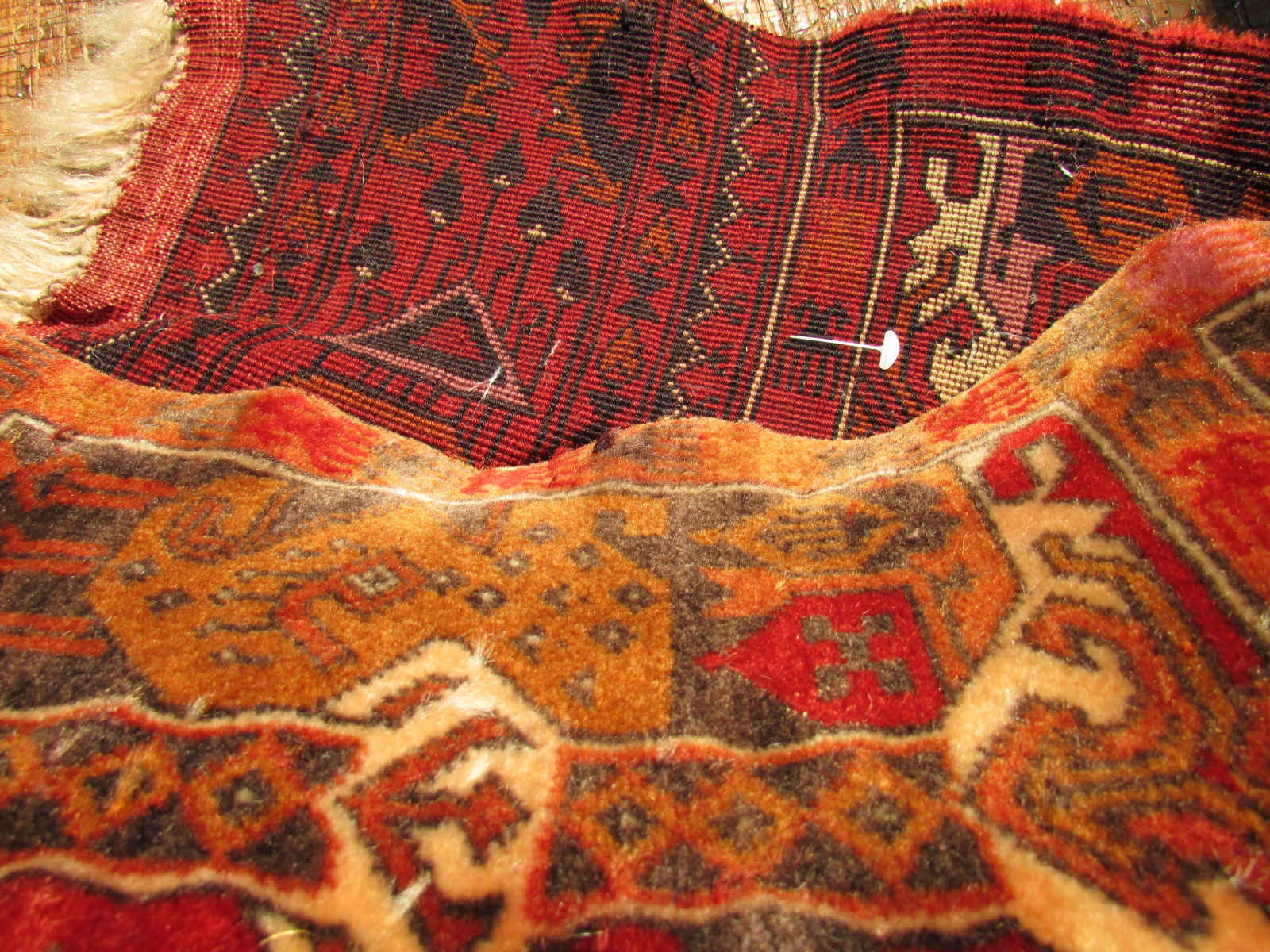
Don’t Worry About:
There are also conditions that typically show up with age and wear and do not detract from the value of the rug or require special attention. The following are just part of hand-crafted rugs:
Horizontal Color Variations (Abrash)
The rug may have a solid red border and a deep blue field when new and now has three shades of red in a border or two shades of blue in the field. The wool used was likely the same color when the rug was made, but variations in wool and the small batch dying process affect how those colors fade when in use. Many collectors feel this is an identifier of hand-knotted rugs, and often machine made rugs will come with intentional variations to imitate this look.

White Knots
These are just a normal part of the foundation of the rug and will show more with wear, so any hand-knotted rug with some history will have them, and any rug with heavy wear or distressing will have a lot of them.
Pile Shading (Reversal)
Some rugs will show light and dark areas that change as you walk around the rug. Some rugs are made this way, and some will gain this look over time. It may become more pronounced as wear reduces the pile height of a rug. This is another condition that collectors consider a positive, but may be at least temporarily correctable.
Irregularities In Pattern Or Shape
Even the most skilled weavers make mistakes and you can find an error in any hand-made rug. Significant errors will negatively affect the value of a collectible antique, but some people feel that the more clunky the error, the more endearing the rug.
Hopefully this information will help you avoid picking up a bargain rug that you can’t really put into use. Remember, if you like the way it looks at the time you buy, it will probably be okay.
Questions often asked when a rug is brought in (whether the rug is a new find or from Nana’s dining room) is, “What’s this rug worth” and “Is it worth fixing.”
Rug values can vary wildly as patterns and colors go in and out of style. Although appraisals can be done, a certified appraisal typically costs $400 or more, so doesn’t make much sense unless you have a true antique and are planning on sending it to auction.
